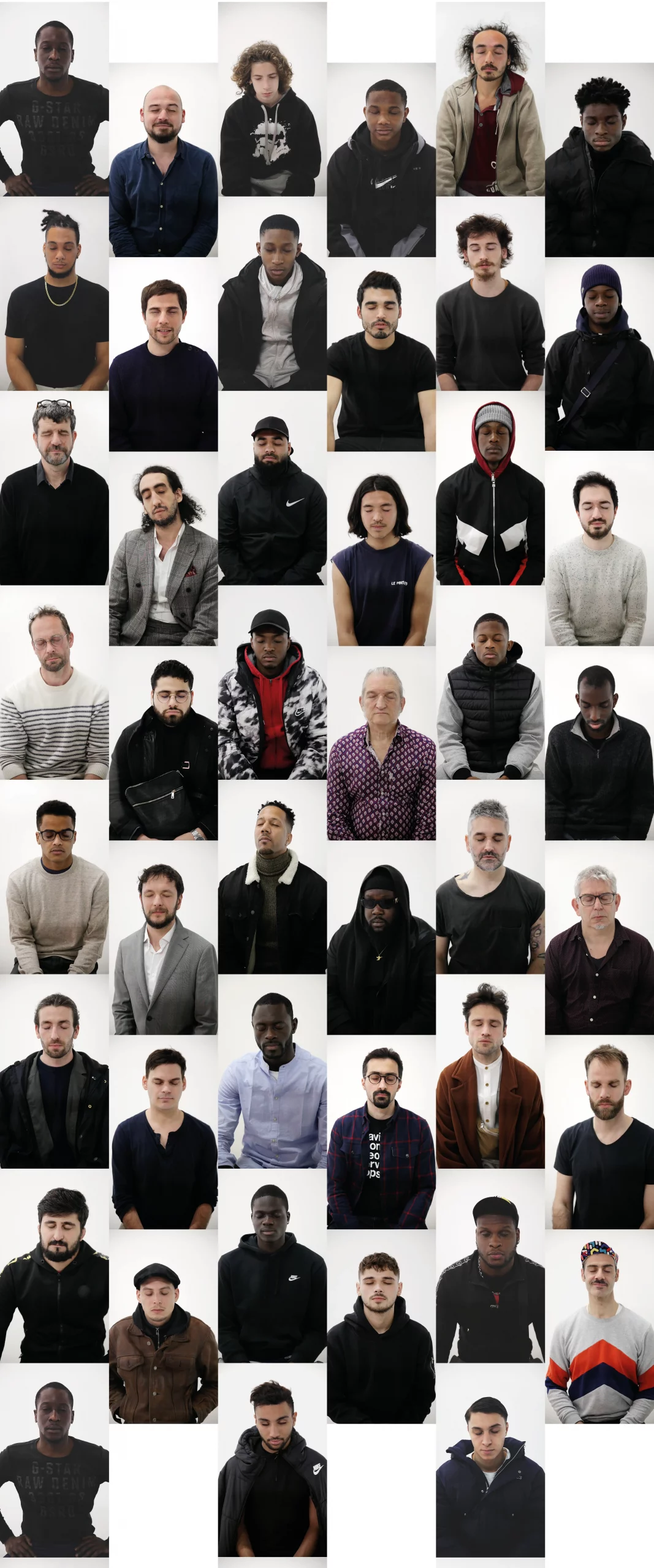If I were a woman
I like to think of the metro as an underground theater. One makes all kinds of experiences (not so pleasant if one is a woman, but that’s another debate). For several years now, I have been enjoying a recurring scene: the adjustments in clothing, hair and posture when a passenger encounters his or her reflection on the doors when entering a tunnel. This experience, which may seem casual, nevertheless leads me to reflect on it. How can I recognize with certainty this attitude, which is different for each person, while observing a stranger? I can distinguish this furtive moment among all. Sometimes the adjustments are very pronounced, but they can also be of a refined discretion. Either way, I do notice them. This change of state is not something we could describe or replicate, it does not happen on demand. Miroir-miroir proposes to reveal this subtle, furtive or strong change of state.
Participants are facing a metal structure containing a camera. They are simply sitting down when I launch the recording asking them to stare at the camera, without moving. After about a minute, I sometimes suggest that he closes his eyes; other times, I just conduct the experiment without interruption. After a short time, I wrap a black veil around the metal piece. With the change of light, the glass through which I am filming becomes reflective and the participant faces his reflection. The camera records the transition from “natural” to self-discovery without further change in the frame.
Once the camera is turned off, the discussion often takes on an intimate quality about one’s relationship to appearance and social habits. I take advantage of these circumstances to propose a last experiment: “How would you be if you were a woman?” I ask… leaving the room without further ado. They are now holding a cellphone on which they can record their response, which often turns into a confession.

